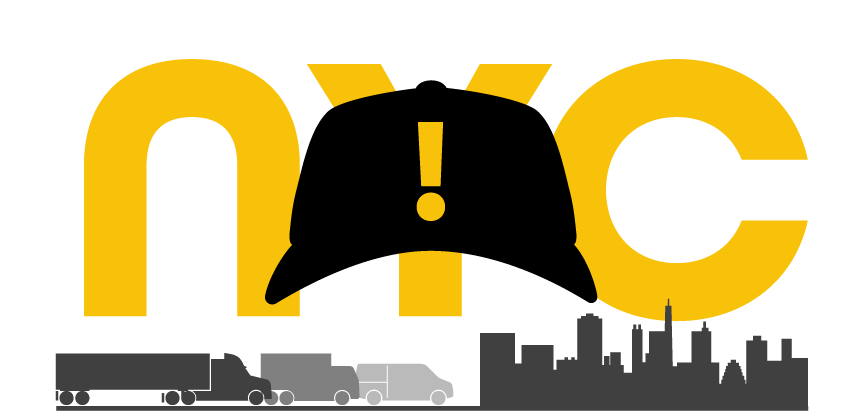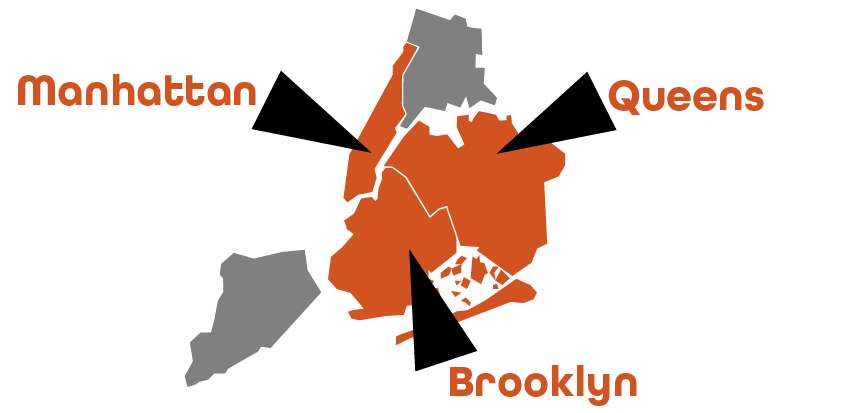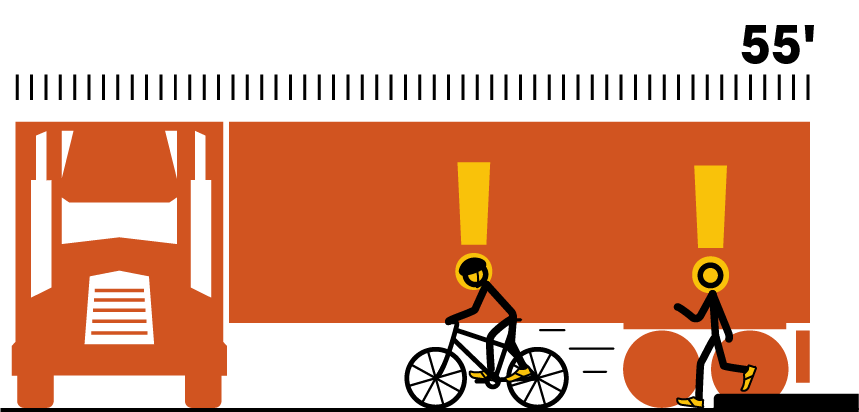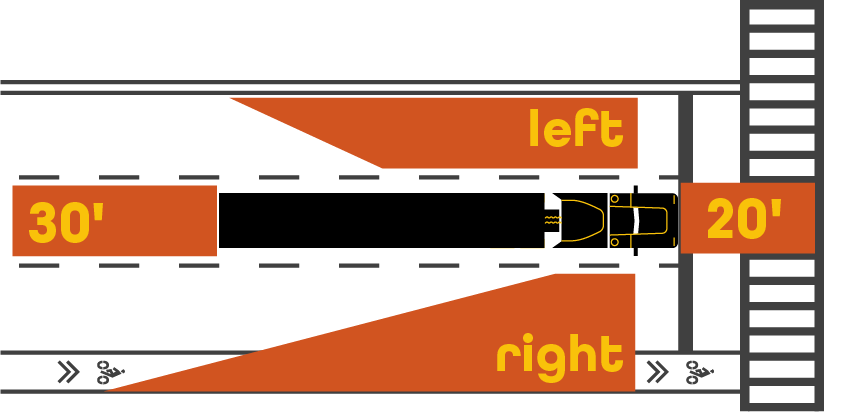Street Smart is an initiative developed by the Trucking Association of New York (TANY).
Share this Site
What is TANY Street Smart?


ARE YOU STREET SMART?

Serious and sometimes fatal traffic accidents involving commercial vehicles occur every year in NYC. To improve safety and prevent harm; it’s time we as truck drivers, personal vehicle drivers, cyclists, and pedestrians all work together to get street smart.
Know the facts. Be aware of your surroundings. Take the right precautions.
LIVES DEPEND ON IT.
Truckers
KNOW YOUR ROUTE

Be mindful of the neighborhood

Be mindful of pedestrians
and cyclists

Be mindful of the time
Pedestrians & Cyclists
BE AWARE

Pay close attention
at intersections

Pay close attention when crossing streets
or changing lanes

Pay close attention
to blind spots
More about TANY and the Street Smart Initiative
KEY  Pillars
Pillars
Hiring
Regulatory/Compliance
Trucking companies follow both regulatory requirements as well as industry best practices to ensure they are hiring the safest, most professional drivers.
- Pre-employment controlled substance testing
- Drug & Alcohol Clearinghouse query for previous positive tests
- Review of motor vehicle record to verify proper license, necessary endorsements and previous violation history
- Must ensure driver is medically qualified
- Employer must verify employment for all previous employers for previous 3 years
- Driver must provide employment history for past 10 years
Industry Best Practice
- Enroll in the Pre-employment Screening Program (provides 5 years of crash data and 3 years of inspection violations)
- Conduct road test to ensure driver can safely operate specific equipment in various environments
- Conduct interview
Training
Regulatory/Compliance
Both behind the wheel and classroom training are important tools in preventing crashes.
- Entry Level Driver Training - beginning in February 2022, all new drivers must complete specific behind the wheel and classroom training before being eligible to obtain a commercial drivers license
- Initial and recurrent training (every 3 years) is required for all employees of companies that haul hazardous materials
- Specific training is required for drivers to be certified to drive tankers, and longer combination vehicles, otherwise know as tandem/triple trailers
Industry Best Practice
- Driver orientation to introduce the driver to the company and align expectations
- On-the-job training to keep drivers up to date on regulatory changes and safe operating practices
- Equipment specific training
Safety Culture
Regulatory/Compliance
Management support for safety creates a safety-minded culture among all employees.
- Hours of Service rules limit the amount of time drivers can drive to promote rest
- CSA (Compliance, Safety, Accountability) measures trucking company safety records to their peers
- CSA Scores assess trucking company safety performance - companies are put in alert status if they receive too many violations and may be subject to a safety audit
- Out-of-Service criteria provide a guide to roadside enforcement on when to put drivers and/or truck out of service for specific safety violations
Industry Best Practice
- Strong safety policies supported by management
- Driver safety bonuses
- Strong employee recognition programs for adherance to safety policies and for those that go above and beyond
Technology
Regulatory/Compliance
Trucking companies continue to invest in enhanced technology to improve the safety and environmental impact of both drivers and vehicles.
- As of December 2019, all drivers required to complete a record of duty status must use an electronic logging device (ELD) in their vehicle
- 43% of U.S. commercial trucks are now powered by the newest-generation, near-zero emissions diesel technology
Industry Best Practice
- Voluntary adoption of advanced driver assistance system (ADAS) technology
- Use of safety technology include blind spot detection alerts, highway departure braking, improved anti-roll braking systems, improved autonomous emergency braking systems, lane departure alerts, multi-lane autonomous emergency braking, among others
- In-cab cameras to monitor and correct driving skills
Partnerships
Regulatory/Compliance
By working together we can improve the safety of all road users.
- Annual Truck Safety Symposium - A collaborative effort organized by the Trucking Association of New York, NYS Department of Motor Vehicles, NYS Department of Transportation, NYS Police, Governor's Traffic Safety Committee, and Federal Motor Carrier Safety Administration.
- Commercial Vehicle Safety Alliance - a partnership of industry and enforcement to achieve uniformity, compatibility and reciprocity of commercial motor vehicle inspections and enforcement by certified inspectors dedicated to driver and vehicle safety.
- Smartway - a partnership of the trucking industry with Environmental Protection Agency to advance supply chain sustainability by measuring, benchmarking, and improving freight transportation efficiency.
- Truckers Against Trafficking - the trucking industry partners with state and federal enforcement to train truck drivers to recognize the signs of human trafficking and report suspicious activity.
Educational Outreach
- Safety Breaks - coordinated by the Trucking Association of New York with the NYS Department of Transportation, NYS Thruway Authority and NYS Police to educate motorists on the unique operating characteristcs of large commercial vehicles.
- Share the Road program - coordinated by the Trucking Associatin of New York, this program trains high school students on how to safely share the road with large commercial vehicles.
- Truck’s Eye View program - a partnership of the Trucking Association of New York and the NYC Department of Transportation to educate pedestrians, bicyclists, and other road users about the blind spots of large commercial vehicles, and how to safely share New York City streets.
The trucking industry is highly regulated to ensure safety in motor carrier operations. However, the industry goes above and beyond compliance with applicable regulations, investing at least $10 billion in safety training and safety technology. (American Trucking Associations Safety Investment Study, 2016)
A full list of safety regulations applicable to trucking companies (and companies with trucks) is available on the Federal Motor Carrier Safety Administration website. fmcsa.dot.gov
About TANY
 NYC Truck Routes Map (PDF)
NYC Truck Routes Map (PDF) "I See You" (video)
"I See You" (video)